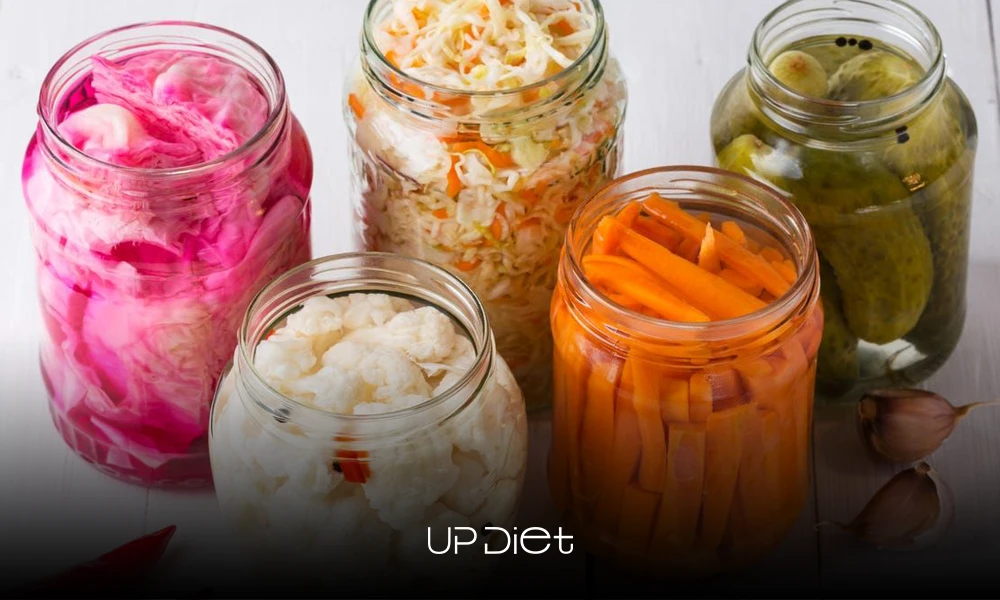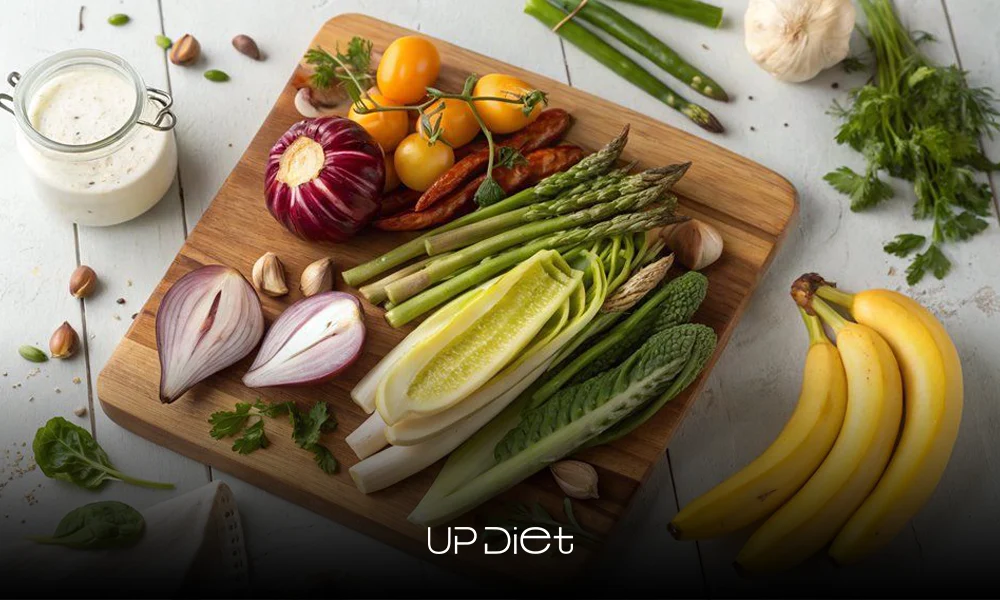Get a plan made for your unique body and goals
Prebiotic and Probiotic Foods List for Reducing Bloating and Improving Digestion

Since the FDA doesn't regulate probiotic and prebiotic supplements, it's no wonder so many people look for real, food-based options they can trust. If that's you, you're in the right place. Scroll down for a ready-to-use prebiotic and probiotic foods list you can actually find at your grocery store.
What Are Prebiotic and Probiotic Foods?
Both probiotics and prebiotics promote gut health, but they're not the same. Probiotics are specific living microorganisms (mainly bacteria or yeast) that help you digest food efficiently. Prebiotics are food components that you can't digest (like fiber), but beneficial microorganisms in your gut thrive on them.

Prebiotic Foods List by Category
A great source of prebiotics is (non-digestible) fiber-rich foods, such as:
Probiotic Foods List by Category
Probiotics are naturally found in fermented foods, including:
Why These Foods Support Gut Health

Prebiotics and probiotics turn your gut into a powerhouse for long-term health by
- Balancing gut microbiome
- Improving digestion
- Reducing gas and bloating
- Promoting a healthy weight
- Enhancing nutrient absorption
- Decreasing inflammation in the body
- Helping with stress resilience and cognitive function
- And more as found in this study
Additional Notes for Use
Incorporating prebiotics and probiotics only gets you so far. To maximize their benefits, you also need to know how to use them effectively. Here are some simple guidelines:
- Timing: Consume prebiotics with meals for better digestion, but probiotics are best on an empty stomach (30 minutes before breakfast or a few hours after dinner).
- Pairing: Combine probiotic- and prebiotic-rich foods in the same meal to simultaneously feed and increase bacteria.
- Frequency: Start slowly. If there's no digestive discomfort, aim for 2-3 servings of fiber-rich foods and 1-2 servings of probiotic-rich foods each day.
- Rotation: Regularly rotate among different sources of these ingredients to maintain a diverse, resilient gut microbiome.
- Storage: Most prebiotic-rich foods don't need refrigeration; a cool, dry place would suffice. In contrast, you should refrigerate probiotics to maintain the live cultures.
Finally, you need to be consistent and integrate these tips into your lifestyle. Providers of microbiome-based personalized nutrition plans (like UpDiet) help you combine dietary changes with other gut-friendly habits.
Final Thoughts
You don't need to overhaul your current diet to have a healthy gut. Start by adding a few favorites from the prebiotic/probiotic lists, and gradually work your way up. Over time, you'll have a balanced microbiome that supports your digestion and general well-being.
- In this post:
- What Are Prebiotic and Probiotic Foods?
- Prebiotic Foods List by Category
- Probiotic Foods List by Category
- Why These Foods Support Gut Health
- Additional Notes for Use
- Final Thoughts



